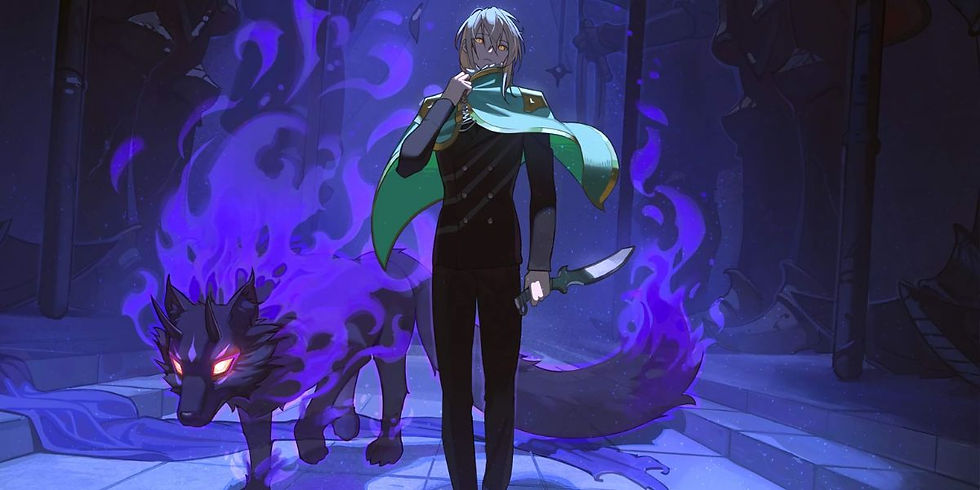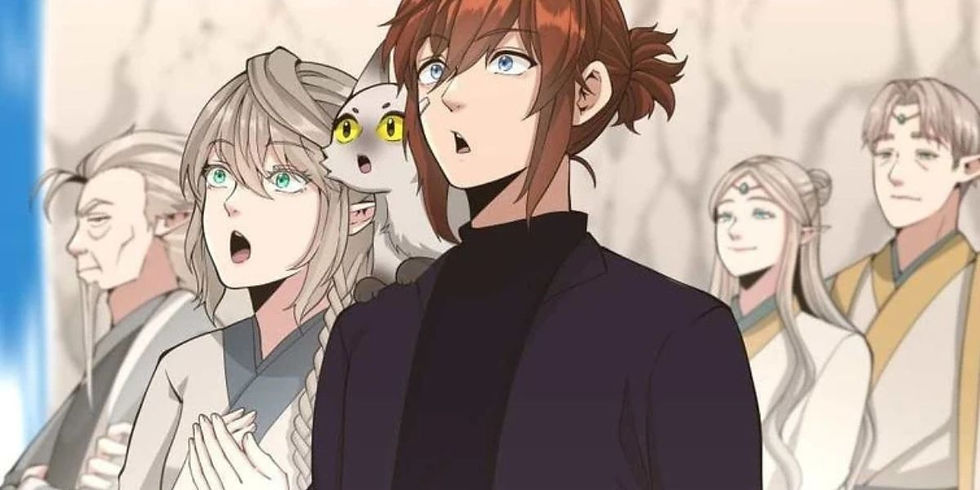Who Is Arthur Leywin? The Overpowered Protagonist Of The Beginning After the End
- Daksh Chaudhary

- Mar 28
- 4 min read

If you’ve ever stumbled into the world of The Beginning After the End (TBATE), you’ve probably asked: Who is Arthur Leywin? He’s the guy who dies as a king in one life and gets reborn as a baby in a magical new world. Sounds like your typical isekai setup, right? But here’s the twist: Arthur isn’t just another overpowered hero. He’s a character who’s equal parts broken, brilliant, and way too relatable.
Let’s be real - most isekai protagonists are either emotionless robots or cocky gods. Arthur Leywin? He’s neither. He’s a former warrior-king stuck in a kid’s body, trying to balance his past-life trauma with his new family, magic school drama, and a world that’s way more complicated than it looks. So, what makes him stand out in a genre full of overpowered MCs? Let’s break it down.
From King To Baby Genius: Arthur’s Wild Rebirth

Arthur’s story starts with death. In his past life, he was King Grey, a martial arts legend who ruled a world without magic. After dying, he’s reborn as a baby in a magical realm. But unlike most isekai heroes, he doesn’t get cheat skills or a harem on day one. Instead, he’s stuck relearning everything - how to walk, talk, and control his new magic powers.
This “baby phase” is what makes Arthur feel human. Sure, he’s a genius, but he still poops his diapers and throws tantrums. His parents don’t worship him, they worry about his weirdly mature behavior. It’s hilarious and heartwarming, and it sets the tone for a story that’s less about power fantasies and more about growing up.
Arthur’s Powers: Broken, But Not Cheap

Arthur’s abilities are wild. He masters elemental magic (fire, water, wind, earth) as a toddler, becomes a sword prodigy by age 10, and even unlocks rare skills like Static Void (freezing time). But here’s the catch: his powers follow strict rules. He has a mana core that needs constant training to level up, and his body can’t handle overpowered spells without consequences.
Compare this to heroes like Rimuru from That Time I Got Reincarnated as a Slime, who absorbs powers like a vacuum cleaner. Arthur’s strength feels earned; he spends years meditating, sparring, and studying. Even his OP moments come with limits. For example, using Static Void drains his mana to near-death levels. It’s refreshing to see an isekai hero who’s strong but not invincible.
Looks Matter: Arthur Leywin's Design & Style In The Beginning After the End

Arthur’s looks evolve wildly across his lives. As King Grey, he rocked short blonde hair, a jacked warrior’s build, and simple robes or battle armor. Reborn as Arthur Leywin, he starts with fluffy auburn hair, big blue eyes, and cute kiddie outfits. But as he grows, his style gets edgier - think button-up shirts with suspenders, sleek black adventurer gear, and a mysterious white mask to hide his identity.
By his teens, Arthur towers over most adults, with a muscular build from non-stop training. But his most iconic look? Realmheart mode, where his hair turns snow-white with orange tips, eyes glow lavender, and golden runes light up his body. His design isn’t just cool, it mirrors his journey from king to warrior to something of a hero of the new world.
Overpowered But Not Invincible

Arthur Leywin is overpowered. By age 3, he’s using magic. By 10, he’s beating adults in sword fights. But here’s the catch: his strength attracts enemies way out of his league. Monsters, rival mages, and even gods start gunning for him. And unlike characters like Saitama, Arthur can’t just one-punch his way to victory. He loses fights, gets betrayed, and watches people he loves get hurt.
This is where The Beginning After the End flips the script with Arthur Leywin. Most isekai heroes become untouchable. Arthur? His power makes him a target. Every win comes with a cost, like sacrificing his childhood to train or pushing away friends to protect them. It’s less “look how cool I am” and more “why does being strong suck so much?”
Family First: Arthur’s Emotional Anchor

What really sets Arthur apart is his family. His parents, Alice and Reynolds, aren’t just background characters. They’re his moral compass. Alice scolds him for acting too grown-up, and Reynolds teaches him sword skills while reminding him to be a kid. Even his little sister, Ellie, keeps him grounded. These relationships make Arthur’s struggles feel real.
Arthur’s love for his family drives every decision he makes. When he fights, it’s not just to flex, it’s to protect them. This emotional core is why fans ugly-cry during TBATE’s darker moments.
The Burden Of Being A Reincarnated Hero

Arthur’s past life as King Grey isn’t just a cool backstory. He’s haunted by memories of loneliness and the pressure of leadership. In his new life, he tries to avoid making the same mistakes, but old habits die hard. He struggles to open up to friends, overthinks every choice, and sometimes acts like a grumpy old man in a teen’s body.
This duality is what makes him fascinating. He’s a kid who wants to play, but also a king who knows war is coming. He’s a genius mage, but also a brother who doesn’t know how to comfort his sister. Most isekai heroes fix their flaws with power-ups. Arthur fixes his by learning to trust others, and it’s way harder than any magic spell.
Final Verdict: Why Arthur Leywin Feels Real

So, is Arthur Leywin from The Beginning After the End just another overpowered isekai protagonist? No. He’s a messy mix of strength and vulnerability. With his lightning spells and a sword that hums with mana, he looks the part of a hero, but his scars, doubts, and family bonds make him relatable.
If you’re tired of invincible heroes who never struggle, Arthur’s your guy. He’s proof that even in a world of dragons and magic, the most compelling battles are the ones fought inside your head.
_edited.png)







Comments